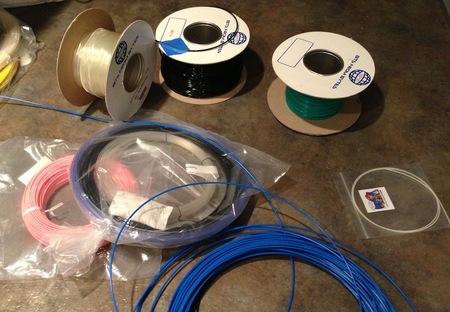Some 3D printer manufacturers have moved to proprietary filament cartridges, but many 3D printers are still capable of using generic plastic filament.
Why go proprietary? Aside from the obvious solidification of plastic revenue, manufacturers want to ensure a more reliable and consistent printing result by using filament that meets their requirements.
Meanwhile, generic filament 3D printers don’t have that advantage. They use plastic filament that’s a lot less expensive, but it may vary in characteristics and quality. Typically one looks only at the price, color and diameter, typically 1.75 or 3.00mm.
But a lot more can go wrong:
- While a filament could said to be 1.75mm in diameter, is it really? How much variance from 1.75mm occurs along the strand? If a bulge or thin section appears, your extruder could fail
- The color might not quite be the color you wanted. Sure, it *looks* green, but when you put the next spool in, the green isn’t quite the same
- Color is achieved by introducing additives to the raw plastic, but some manufacturers may employ toxic substances to do so. This is not a good thing
- One filament may bend nicely, while others may snap suddenly, which is particularly maddening during print operations. Hardness can vary from manufacturer to manufacturer and even from batch to batch
These and other concerns could be alleviated by creating a Filament Standard, one that specifies a specific value for each of the above (and others), along with a maximum permitted variance.
For example, a 1.75mm filament might meet the standard for diameter if it never varies by more than 0.02mm. Or “Green” is truly green, regardless of where you purchased it. And most importantly, you won’t be poisoned by your filament.
Shopping for filament could then be simplified by simply looking for the “certified” logo, meaning the manufacturer has adhered to the full set of specifications.
Today no such standardization is used by filament manufacturers as far as we know, but it’s very likely proprietary filament does adhere to internal standards.
It’s time to standardize filament.


